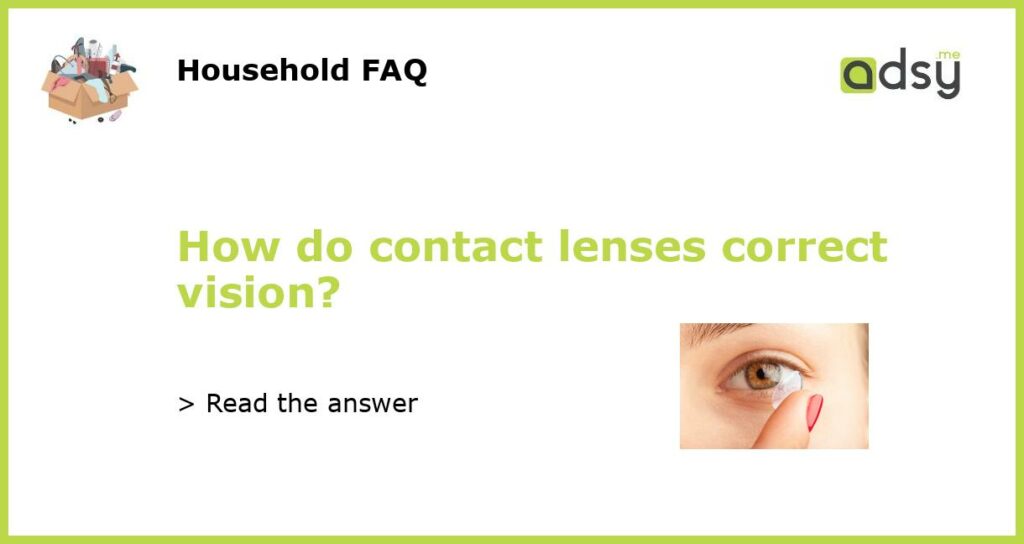How Contact Lenses Correct Vision
Contact lenses are a common solution for people who want to correct their vision without wearing glasses. These small, thin lenses sit directly on the eye’s surface, providing a clear and focused image. But how exactly do contact lenses correct vision? Let’s explore the science behind this popular vision correction method.
The Basics of Vision Correction
Vision problems, such as nearsightedness (myopia), farsightedness (hyperopia), and astigmatism, occur when light entering the eye does not properly focus on the retina. This can result in blurry or distorted vision. Traditional corrective methods, like glasses, work by bending incoming light to compensate for the eye’s refractive errors. Contact lenses, on the other hand, directly address the root cause of these refractive errors.
The Science behind Contact Lenses
Contact lenses are designed to act as a substitute for the eye’s natural lens, which is responsible for focusing light onto the retina. By placing a lens directly on the cornea, contact lenses work to correct vision problems by altering the way light enters the eye. Depending on the specific refractive error, contact lenses come in different designs that can correct nearsightedness, farsightedness, or astigmatism.
Types of Contact Lenses
There are two main types of contact lenses commonly used for vision correction: soft contact lenses and rigid gas-permeable (RGP) lenses. Soft lenses, made of a gel-like material, are the most popular choice due to their comfort and ease of use. RGP lenses, made of a rigid plastic material, provide sharper vision but can take some time to adapt to. Both types of lenses work in a similar way by altering the path of incoming light to compensate for refractive errors.
The Role of Prescription
Properly fitting contact lenses require a prescription from an eye care professional. During an eye exam, the eye doctor determines the specific refractive error and measurements necessary for the prescription. This includes assessing the power, curve, and diameter of the contact lens that will provide optimal vision correction. It’s important to regularly update contact lens prescriptions to ensure clear vision and maintain eye health.






